Logi Circle Wireless Camera Review
Pros
Cons
Rating
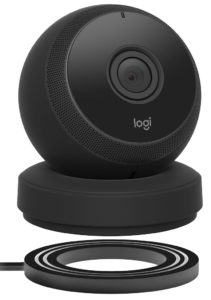
Introduction
We’ve tested a number of wireless cameras over the past few years, some of which you can find reviewed on our site, others which simply didn’t merit a full review. The truth is that it’s easy to market a wireless security camera full of neat-sounding features, but it’s harder to make it actually work. That’s what we’ve found recently with several security cameras marketed by California-based startups backed by significant amounts of venture capital. Of course, we’re not going to name names here, because that’s not done in the mainstream tech press (oh, did we just name names?), but there are a lot of heavily-promoted products that we wouldn’t recommend to anyone. That’s despite the surprisingly-positive coverage major tech sites give these clearly half-baked products.
So when we saw that Logitech released a new security camera in the Fall of 2016 to very little fanfare, but with some interesting specs, we reached out to our contact there. What had Logitech brought to this oversaturated market, we asked, and why were the few published reviews at big tech sites so darn negative? Logitech has been around long enough “to know when to hold ’em, and when to fold ’em,” as Kenny Rogers once said. We just couldn’t believe that it would throw its name behind a mediocre product, especially given that it has the engineering talent to pretty much flatten any startup out there….
Read on to find out if the Logi Circle Cam is a cut above the rest, or just another disposable entry in the home security cam arena.
We’d like to extend a special thank you to Logitech for providing a sample of the Logi Circle Wireless Camera for review.
Description and Features
First things first, what’s up with the name? Is this a Logitech product, or is there a new company called Logi? Well, the box tells us that this is “logi by Logitech.” And our gut tells us that Logitech was a little worried about launching its Smart Home products without a short, catchy name like Echo, or Nest, or August, or Wink, or Canary, or Arlo, or Ring. We agree the name Logitech is a little too, well, “techie” to make it stand out in the Smart Home market, so hopefully Logi will fair well in that regard, although a new and completely different sub-brand name might have worked even better.
All right, with that out of the way, we can get into specifics regarding the Circle Cam. In the box, you’ll find a number of parts, the most obvious being the camera itself. But due to the additional functionality of this camera, which we’ll discuss in a moment, it has a few extra parts you might not find in other products. First you have a heavy disk that serves as the power ring, which interfaces with the camera via two metallic bands that contact two tiny prongs on the bottom of the camera. It’s permanently attached to a 10-foot long, extra-thick power cable. This cable is detachable at the other end, where it plugs into the AC power adapter via a standard USB Type-A connector. We’re not sure if Logitech chose a thick, flat power cable to carry more current, or to add a little style, or to prevent tangling, but we will say it’s a bit harder to route due to its resistance to bending. Additionally, we wish Logitech has offset the prongs to one end of the adapter or the other. As it is, it’s very likely that the adapter will interfere with other power adapters plugged into adjacent outlets.
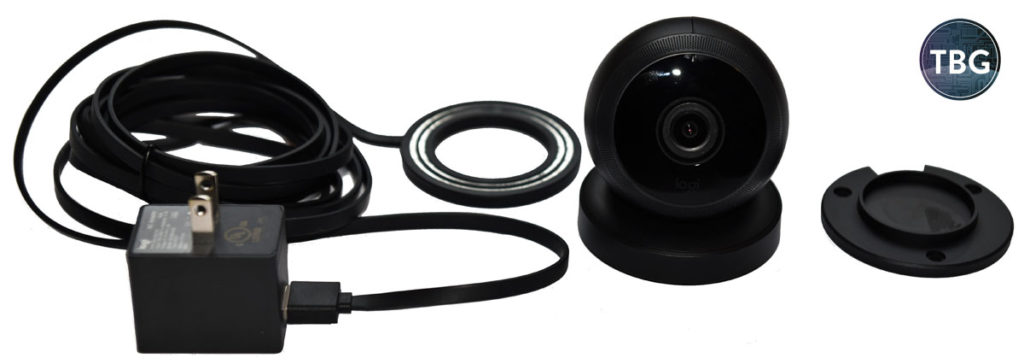
The last component is a simple plastic disc that serves as the foot of the camera when sitting on a flat surface, but can also be wall-mounted using included mounting hardware (screws and plastic anchors). The three mounting components fit together seamlessly using strong magnets; the camera sticks to its charging disc, which likewise sticks very solidly to the mounting disc. This is a pretty slick system compared to the awkward plastic clips we’ve seen on cameras from other brands, which are susceptible to snapping with extended use. Because of the large magnets embedded in each part, this camera and mount has significant weight to it, which for the most part is innocuous enough, although some users may take issue with it during mounting, or when it comes crashing down when the dog gets to it.
The Logi Circle uses a 135-degree wide-angle lens, which means it offers a lot of coverage despite the lack of pan-and-tilt functionality that cheaper wireless IP cameras offer. Our guess is that the cost of a proper wide-angle lens is actually more than the pan-and-tilt mechanism, which is why you see the two different approaches being used. For just about any user, pan-and-tilt is a gimmick with little benefit, although if you need wider than 180-degree coverage (which can only be achieved by setting a pan-and-tilt to rove side-to-side), a pan-and-tilt model is your only option. Overall, we definitely like the wide-angle approach. The Logi Circle can be manually tilted up and down from about 15 degrees beyond vertical to 5 degrees below horizontal. The negative tilt is great for monitoring cribs from above, for example, whereas the vertical position makes sense if you’re attaching the Circle to the wall, in which case vertical position translates to horizontal.
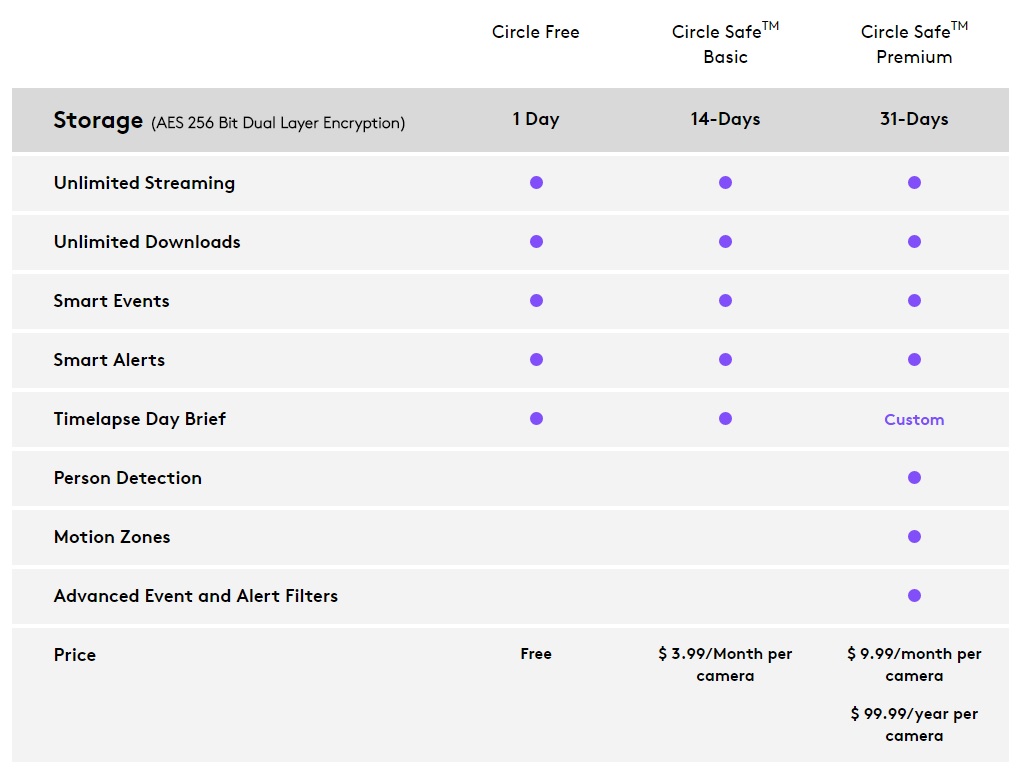
Now, let’s get down to price, or more accurately pricing. When it comes to security cameras, we think most of the startup camera makers are hoping to recoup losses they may accrue through sales of their cameras with subscription fees. This includes startups that are startups no more, like Google-owned Nest. Google didn’t pay over $3.2 billion for Nest because it thought it could make that up on selling $200 cameras. It hoped to hit up users with fees (and sell a lot of personal data). And from what we gather, most users of Nest as well as competing “security” cameras are likely paying those fees, because without recordings these aren’t much good as “security” cameras. Said another way, a $200 Nest Cam is worthless as a security camera unless you pay a $5-$15 monthly fee. That makes these $200 cameras sound more like rental products to us, ones you rent at a rate of around $120 a year on average after you’ve purchased them.
So how does the Circle change all that? Somehow, someone in Logitech’s marketing division was able to convince the bean counters that a $200 security camera that actually did what it was marketed to do was a viable concept. Imagine that! The Logi Circle is therefore a breath of fresh air, providing legitimately-free recordings of all “events” (i.e., motion) over the past 24 hours, presumably for the life of the product. What’s even better, the smartphone (and PC) applications allow you to access these recordings very easily, with tags every time the camera detects motion, so you can jump right to the good stuff (or the bad stuff, as the case may be). Of course, there are subscription plans available, as detailed in the chart above, but we think they are very reasonable, costing 1/3 to 1/4 of what competitors are charging. Admittedly, these aren’t 24/7 recordings (rather, they only catalog times of motion), but they are probably all you need. The one caveat is that the device won’t keep a record of sounds where there is no motion, which could be a problem for something like footsteps or glass shattering off camera, or a baby crying without moving.
In addition to saving recordings longer (for an impressive 31 days!), the premium plan offers person detection, tailored alerts, and custom timelapse videos. Again, we commend Logitech for choosing the “truth in advertising” approach, marketing a product that provides all the basic services without requiring an additional expenditure, while offering enhanced services for an additional cost.
The Circle has a number of notable features that we haven’t touched upon yet, including its built-in battery, its advanced night vision, and its dual-band 802.11n networking. We’ll discuss all of these features on the next page, in the context of real-world performance. But before we get there, we need to discuss one feature the Circle does not have: Smart Home integration. This has been raised as a dire concern in other professional reviews, but in our opinion, having tested a number of security cameras that integrate with our Wink/Echo-based Smart Home network, this is simply misguided criticism. The only functionality a camera can add to a Smart Home setup is motion-based triggering, like lights turning on or an alarm sounding. But for 99.9% of users of the Circle, these features just wouldn’t be utilized. Unlike some of its competitors that falsely market their cameras as home security solutions (which of course would require actual sirens and professional monitoring), Logitech doesn’t claim the Circle will do things it cannot. Simply put, we view this as a pro, not a con.
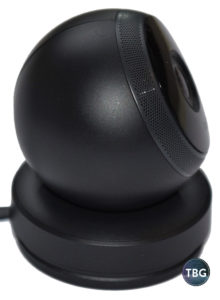
Performance
To get the Logi Circle up and running, we first had to download the app to our smartphone. We set up the camera using an Android phone, but also tested it on an iPhone. Unfortunately, we hit snag during setup where the registration server kept throwing an error, which did inspire confidence in the process as a whole. After trying a few times to no avail, we came back to it later in the day and it worked fine. That being said, Logitech should make absolutely sure this process is painless, because we could see some users giving up right here and returning the product without ever having used it.
The next step was positioning the product where we wanted it. This was made a whole lot easier by the fact that the Circle has a built-in battery. We could test the Circle in a wide range of locations without worrying about plugging it in at each stop and trailing a cord behind. Now, we’re just going to get this out of the way here. The battery is not intended for long-term usage. It ran about 2-3 hours in our nighttime testing, and a bit longer in daylight testing. Logitech advertises an “up to 12 hours” rating, but we sort of wish it didn’t. This rating is only when the device is in WiFi-on mode, able to take commands, but only running the camera when the app is actually open. In other words, that’s a “just for fun” mode, it won’t provide any actual security. There are currently two competing products that offer fully-wireless operation, the Netgear Arlo and the Ring Stick Up Cam. Neither is all that great, because they achieve their better battery life rating by essentially shutting off the entire time, only coming to life when motion is detected by the non-camera sensor. The problem is, motion isn’t always detected properly by this sensor, meaning important events are missed, and furthermore, you can’t check in on your home from the app (the Stick Up Cam offers this as an optional mode, which cuts battery life down from months to weeks). When the Circle operates in its fully-engaged mode, there’s very little chance it will fail to record any motion, which makes it perfect for short stints in front of the baby’s playpen or in the backyard watching the dog.
When it comes to wireless performance, we found the Circle was just about average compared to other camera products. While we’re pleased to see it offers both 2.4GHz and 5GHz bands, they are unfortunately limited to the 802.11n standard, and to be honest, 802.11n 5GHz was just slightly ahead of its time. It provided great throughput, but had extremely-limited range. So, unfortunately, it’s just about useless in a camera product that will be placed far from a router. And we should make clear that we used the Linksys EA9500, the fastest, longest-range, and most expensive router on the market. The router was most definitely not the limiting factor in wireless performance. Once we switched from 802.11n 5GHz to 802.11n 2.4GHz on the Circle (which unfortunately requires a device reset – Logitech should really allow this right from the app), range improved tremendously. We utilized 720p streaming for all our testing, as 1080p streaming is really unnecessary for home surveillance, bogs down home networks tremendously, and would lead to more dropouts. As it was, about 100 feet from our router, we had 30-second dropouts about once or twice a day, which isn’t of much concern in the grand scheme of things. Many of the Circle’s peers that we’ve tested had far more frequent dropouts, as well as very delayed access times when starting up a live feed from a smartphone app.

We were extremely impressed by both video and audio quality, and this was despite the fact that we limited our testing to 720p. For most surveillance purposes, the difference between 720p and 1080p is insignificant. This is especially true for night vision use, which is where we most often used the Circle. Note that night vision will not work properly through glass, so while we did set up the Circle to monitor a front door through a window, this was only effective during the day.
The audio quality was particularly impressive. The onboard microphone was so sensitive that it could pick up the breathing of a baby in the middle of the night, which is a feature a lot of parents will find very, very reassuring. No other camera we’ve tested has been able to do that, often as a result of being overwhelmed by background noise that leads to static. The only concern we had about the audio was that it, like the video, was subject to a 1/2-second delay through the app, which meant real-time conversations using the two-way audio feature were a bit stilted.
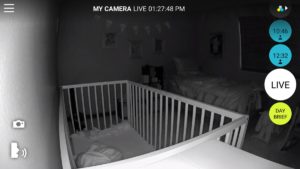
Logitech really hit one out of the park with the Circle App which is both highly functional and easy to use. We simply love the easy access timeline, which lets you jump to all the moments during the day when motion was recorded (tagged with a “person-detected” indicator if you subscribe to the Circle Premium service). We also like the clear, simple buttons for taking a still photo or engaging the talk function. Deeper menus are accessed via the drop-down menu button, and these included video quality and type, microphone functionality, and a whole range of Smart Home functions, such as Smart alerts based on the users location (for example, you can receive motion-based alerts only when you are away from home). The only issue we had with this functionality is that it requires you to have your smartphone’s GPS permanently enabled, so like other Smart Home devices, it offers something useful that comes at significant expense: your smartphone battery life.
Logitech’s timelapse “Day Brief” feature is by far the coolest thing we’ve ever seen in a Smart Home camera. It makes you completely forget about the fact that you’re not actually getting 24/7 recording, because who wants to view that anyway. What you get instead is all the highlights, in a fast-forward format, of motion during the day. This is especially fun if you’re monitoring a child or pet, because you’ll get to see things you wouldn’t have otherwise. It’s just a ton of fun, and it will keep users coming back to the app on a regular basis, even if they decide that they don’t need to constantly check in for security purposes.
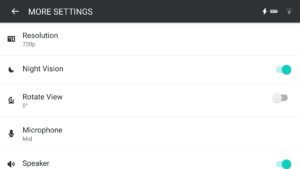
There are just a few concerns we have with the app’s overall design. First, the battery and WiFi meters are only viewable in the deeper context menus, which is a big oversight. Logitech should move these right into the main camera display, because they will be very important to users experiencing connection issues. Secondly, the control for the onboard microphone must be moved to the main screen as well. It makes little sense to have it buried in a second-level menu, where it currently resides, because when viewing the app in a public space, the last thing you want is for everyone around you to suddenly hear your dog barking or baby crying when you open the app.
Note that unlike every other major security camera manufacturer, Logitech also offers a browser-based version of its app, which works just like the smartphone app. That means you can monitor your home from the convenience of your PC’s screen while getting other work done. Brilliant!
Conclusion
We focused a lot on pricing earlier in this review because it’s one of the features that most distinguishes the Logi Circle from its competitors. Sure, we love the Circle’s app interface and useful timeline and Day Brief functionality, and the Circle matches or beats all of its competitors in terms of features that people can actually use. But the fact that Logitech is making this a fully-functional product right out of the box, without a required subscription, puts it in a class by itself. Everything else is just a rental unit as far as we’re concerned.
Of all the wireless camera products we’ve tested, including a number that we still personally utilize 24 hours a day, this is far and away our favorite, and the only one we can wholeheartedly recommend. Are there a few areas that could stand to be improved in version 2.0? Sure, but we know Logitech is listening and has the ability to make those changes.
The Logitech Logi Circle Cam Black is available for $175, while the Logitech Logi Circle Cam White is $165, as of our publication date. That makes it a clear best buy and the only stand-alone wireless home camera we recommend anyone even consider.
For all of our favorite picks in the Smart Home arena, check out our Smart Home Buyer’s Guide, updated quarterly.


